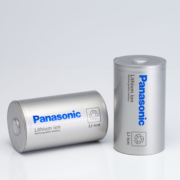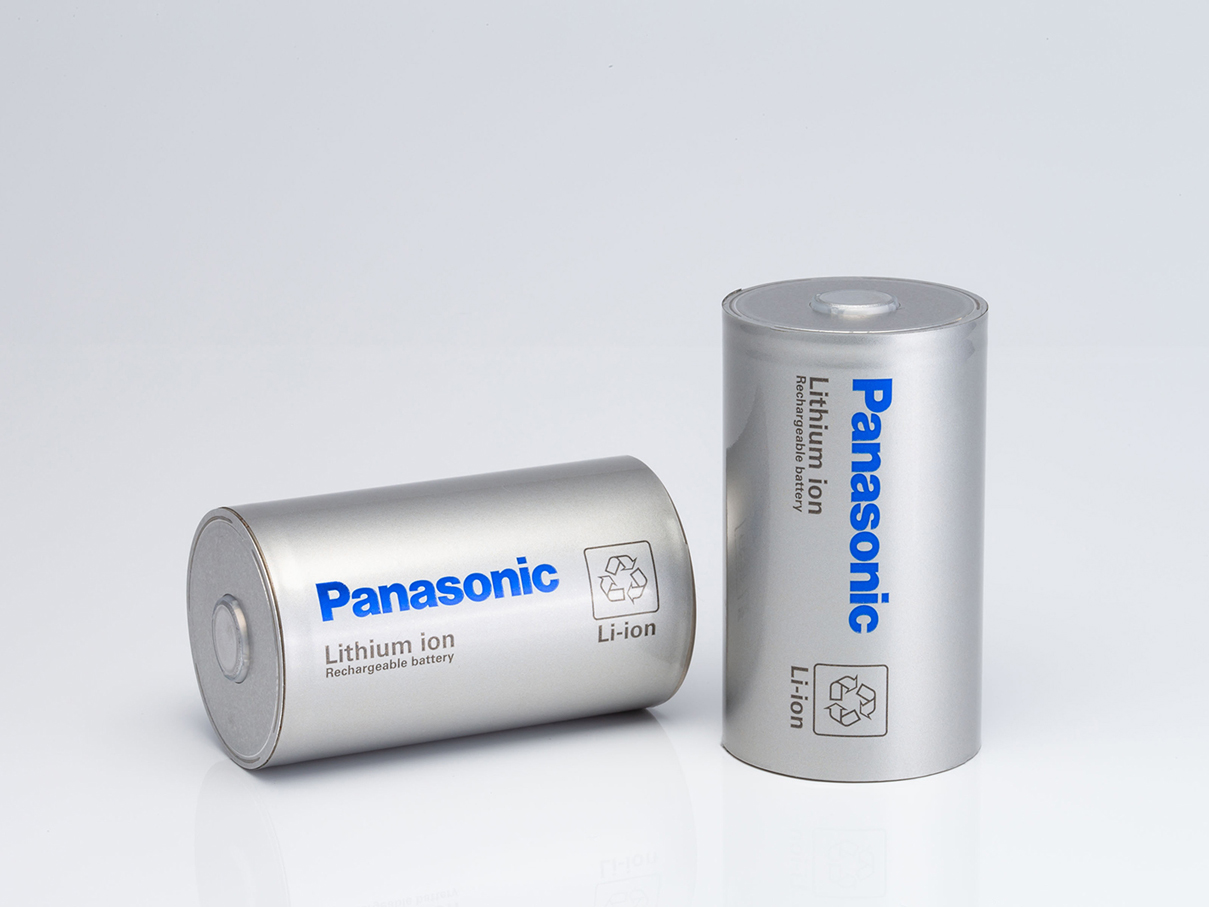Korean, Chinese, and Japanese Battery Giants Race for U.S.-European Market Share: A Full-Spectrum Analysis of Technology, Costs, and Strategy
Picture: Copyright © Panasonic Holdings Corporation
In the electric vehicle era, the battery titans of South Korea, China, and Japan are all staking out positions in the United States and Europe. LG Energy Solution (LGES), SK On, China’s Contemporary Amperex Technology (CATL), BYD, and Japan’s Panasonic Energy are now indispensable to EV and stationary-storage supply chains. Each company follows its path in cell chemistry, cost structure, overseas expansion, and partnership policy, yet all must navigate local industrial policies and ever-tighter sustainability rules.
Global market share figures for 2024 underscore the shift: CATL remained No. 1 with 37.9 percent of worldwide EV-battery installations; BYD ranked second at 17.2 percent; LGES came third at roughly 10.8 percent; SK On and China’s CALB tied for fourth at about 4.4 percent each; Panasonic held sixth place at 3.9 percent. China’s surge is unmistakable, while Korean and Japanese firms rely on technology upgrades and cross-border alliances to stay competitive. The five companies pursue tailored playbooks in each market because policies and customer mixes differ sharply between the U.S. and Europe.
- Cell-chemistry playbook: NCM, LFP, and the solid-state race
NCM/NCA vs. LFP. Chemistry choices diverge clearly. Korean players LGES and SK On have long specialized in high-nickel NCM cells for long-range passenger cars; SK On supplies Ford’s Mustang Mach-E and F-150 Lightning and intends to raise nickel content further. Panasonic, Tesla’s long-time partner, touts high-nickel NCA cylindrical cells; its 2170 and 4680 formats emphasize energy density and power. However, high costs and the limited supply of nickel and cobalt have everyone scrambling to trim cobalt content and sharpen cost–performance ratios.
Chinese companies lead in lithium iron phosphate (LFP). BYD’s blade battery, an LFP prismatic cell, prioritizes safety and long cycle life, suiting buses and mid-to-lower-end cars. CATL mass-produces LFP packs for Tesla’s standard-range models and energy storage; its CTP (cell-to-pack) design and new Kirin pack push the LFP range toward 700 km. As LFP’s cost-and-safety edge widens, Korean and Japanese rivals are moving in: LG has announced a 17 GWh LFP line in Arizona dedicated to storage systems, plugging a strategic gap.
Solid-state R&D. All five giants are chasing all-solid-state or semi-solid cells, but commercial timelines vary. The Toyota–Panasonic alliance entered the field early and targets pilot production around 2027-28 in hybrid vehicles. SK On has published sulfide-solid research and is eyeing test runs in 2027 and mass production by 2029. LG is investing in U.S. start-ups such as Sion Power for lithium-metal know-how. CATL and BYD are also active; CATL has shown a condensed-state prototype boasting 500 Wh/kg for e-aviation. Yet a complete switch from Li-ion is still years away, so most firms are upgrading lithium chemistries, CATL’s high-manganese M3P, BYD’s sodium-ion experiments, etc.
Form factors. Panasonic sticks to cylindrical cells and co-develops large 4680s with Tesla for highly automated lines and performance cars. CATL and BYD favor prismatic cells, and BYD’s blades double as structural beams. Historically, LG and SK shipped mostly pouch cells to let carmakers design flexible packs, but LG is now adding cylindrical capacity for North American start-ups. Choice varies by application: premium cars prefer high-nickel NCM/NCA for range; buses and commercial vehicles prize low-cost, cobalt-free LFP; big storage systems, indifferent to weight; also choose LFP. China dominates bus and storage batteries; Korean–Japanese suppliers still lead the high-performance passenger segment, but the line blurs as LFP improves.
- Price & cost: economies of scale and supply-chain control
Scale. Output volume is decisive. CATL shipped 339.3 GWh in 2024, about 38 percent share, and enjoys unmatched economies of scale. BYD installed 153.7 GWh, primarily for its vehicles, spreading fixed costs across booming sales. LGES delivered 96.3 GWh (10.8 percent) but lost share, feeling China’s pressure. SK On (39 GWh) and Panasonic (34 GWh) are only one-eighth to one-tenth CATL’s size, giving them a cost disadvantage. Hence the rush to 30-40 GWh gigafactories: LG-GM, LG-Honda, and LG-Hyundai plants in the U.S.; SK-Ford and SK-Hyundai lines; Panasonic’s 30 GWh Kansas investment—all meant to slash dollars per kWh and secure OEM demand.
Materials. Control of upstream supply confers further advantage. China refines most of the world’s lithium, nickel, and cobalt, allowing CATL and BYD to lock in cheaper cathode inputs. They buy mines or sign long-term salt contracts. Korean firms strike deals with allied nations: LG Chem secures lithium/nickel in North America and builds a Canadian cathode plant with GM; SK On pursues joint ventures in Australia and Chile. Panasonic leans on Tesla for lithium and partners with Redwood Materials for recycled high-nickel cathodes—cutting import reliance and carbon footprints. Material leverage keeps Chinese costs slightly lower, but Korean-Japanese rivals are narrowing the gap through global sourcing.
Manufacturing efficiency & location. China’s labor costs are low; Korean and Japanese strengths lie in process control and high yields. All five are pouring money into automation, AI, and MES systems to trim labor and scrap. Western plants cost more, but subsidies offset that: the U.S. IRA offers domestic cells a US$35/kWh tax credit. LGES’s 2024 operating margin slid 73 percent yet stayed positive (2.2 percent) only because IRA credits cushioned rising expenses—without them, it would barely break even. As American and European subsidies grow, Korean, Japanese, and even Chinese-owned local factories could gain a subsidy-driven cost advantage, leaving exporters without plants exposed to future price wars.
- U.S. and European build-outs & political risk
United States. All five groups have ambitious U.S. plans:
- LGES and GM’s Ultium Cells are erecting three 30-40 GWh joint factories in Ohio and Tennessee; LG’s own US$5.5 billion Arizona site (2026) will make 36 GWh of 46-series cylindrical EV cells and 17 GWh of LFP pouch cells for storage. LG also has JV plants with Honda (Ohio) and Hyundai (Georgia).
- SK On and Ford’s BlueOval SK won a US$9.2 billion Energy-Department loan for three plants in Kentucky and Tennessee, plus a US$5 billion JV with Hyundai in Georgia; SK’s U.S. capacity will top 180 GWh.
- Panasonic is spending US$4 billion on a 30 GWh 4680 plant in Kansas (2025) to serve Tesla and new clients.
- CATL stays cautious: Politics bar a wholly-owned U.S. factory, so it licenses LFP tech to Ford for a Michigan plant that now faces political scrutiny and scaled-back investment.
- BYD only has a California bus assembly shop; tariffs and geopolitics keep its passenger car and battery ambitions focused on friendlier Europe.
Europe. Governments there, keen to cut Asian import dependence, welcome gigafactories:
- LGES runs a 70 GWh Polish plant supplying VW and will add 4680 lines for Tesla.
- SK On operates in Hungary and plans a second site.
- Panasonic has no EU plant, relying on a JV with Toyota for hybrid batteries.
- CATL opened a 14 GWh site in Thuringia, Germany, and is spending €7.3 billion on a 100 GWh Hungarian mega-plant for Mercedes-Benz and VW (first lines 2025). It will build a third factory with Stellantis in Zaragoza, Spain, drawn by rich subsidies and cheap green power.
- BYD links car and battery expansion: A 150,000-unit assembly plant in Hungary (2025) and a Turkish plant (2026) will anchor battery demand; a German site is under review. EU anti-subsidy duties loom, so BYD chooses hosts with milder views on China.
Political & market risk. Korean and Japanese firms enjoy ally status but must still negotiate union wage demands and election swings; they hedge by locking in long-term OEM deals and lining up fallback customers (LG swapped Toyota for GM’s canceled fourth Ultium plant). Chinese groups face deeper scrutiny: CATL takes minority JV stakes with Stellantis to lower visibility, and in the U.S., it sticks to licensing. BYD banks on local jobs and brand recognition but may run into EU subsidy probes. Meanwhile, slower EV sales have already forced capacity rethinks; GM dropped an LG JV in 2024, prompting LG to convert lines to storage cells. Flexible production, broader customer bases, and storage-battery diversification are now survival tactics.
- Sustainability & carbon footprints: tightening rules
The EU Battery Regulation will phase in from 2025: carbon-footprint declarations, a maximum CO₂ threshold from 2027, mandatory recycled content by 2030, and digital battery passports. All suppliers must adapt.
Clean power. Plants are sited where renewables are cheap—CATL chose Spain partly for wind and solar; U.S. JVs design rooftop PV and green-power PPAs. LG and SK vow 100 percent renewables by 2030 (RE100). Panasonic is boosting Nevada solar and installing high-efficiency kits.
Responsible sourcing. LG and Panasonic joined the Responsible Minerals Initiative; BYD and CATL cut cobalt via LFP or recycling. Western customers demand traceability.
Recycling. LG/GM backs Li-Cycle; Panasonic partners with Redwood; CATL’s Bruno subsidiary runs a Chinese closed-loop system; BYD promotes second-life storage. Sustainability is both a compliance hurdle and a way to ease raw-material cost pressure.
- Partnership models: alliances and co-opetition
With U.S. automakers, Ultium Cells (LG-GM) is a landmark, even after GM scrapped a fourth plant that LG then redirected to Toyota. SK-Ford’s BlueOval SK has been locked in for a decade, and SK just signed America’s first large NCM deal with Nissan (nearly 100 GWh, 2028-33). Tesla diversifies: Panasonic remains key, but Tesla also buys NCM cells from LG, LFP from CATL, and—reportedly—from BYD in Germany, pitting suppliers against one another.
With European OEMs. VW still buys from LG, Samsung SDI, and CATL while building its PowerCo plants. CATL will supply BMW from Germany and Mercedes from Hungary; Stellantis joined CATL for a Spanish factory. Dual-sourcing is the rule, keeping all five giants in play.
Storage and buses. LG sells ESS modules with energy-management partners; BYD offers turnkey storage plus its buses; CATL markets modular cabinets competing with Tesla’s Megapack. Collaboration webs span passenger cars, commercial vehicles, and grid storage.
- Competitive landscape & outlook
LGES leverages deep ties with GM, Honda, and Hyundai and adds cylindrical and LFP capacity, but it must also restore margins and stem share loss.
SK On grows fast with Ford and Hyundai orders and aims for solid-state breakthroughs; it lacks LFP and full scale but could close gaps as U.S. lines ramp.
CATL pairs colossal scale with a complete chemistry portfolio. European mega-plants will lift their share and will likely keep using JV or licensing detours in America. It must watch for protectionist backlash.
BYD integrates cars and batteries. Its LFP edge is clear, but OEMs may hesitate to buy from a competitor; a spin-off battery unit is possible later. The near-term focus is to anchor European plants and time a move into the U.S. car market.
Panasonic Energy remains Tesla’s premium cylindrical specialist but needs new customers and chemistries (perhaps LFP or solid-state) to revive growth.
The U.S. and Europe will remain the fiercest battlegrounds. Alliances will multiply, technology road maps will diversify, and subsidies, tariffs, and carbon rules will keep the chessboard in constant motion. Decision-makers must now have a cold-eyed grasp of each rival’s strengths and weaknesses to choose partners and strategies in the global battery race.





